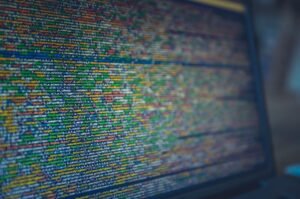Tesla Model S Lug Pattern
The lug pattern of a vehicle determines the number of studs or bolts used to secure the wheel to the hub and is an important specification to consider when purchasing new wheels for your Tesla Model S. This article will provide you with all the essential information about the lug pattern of a Model S.
Key Takeaways:
- Understanding the lug pattern is crucial for selecting the right wheels for your Tesla Model S.
- The Tesla Model S has a 5×120 mm lug pattern, indicating five studs or bolts spaced 120 mm apart.
- Aftermarket wheels must have the correct lug pattern to properly fit the Model S.
What is a Lug Pattern?
The **lug pattern** (also referred to as bolt pattern or PCD) refers to the arrangement of lugs or bolt studs around the wheel hub. It is expressed as two numbers separated by an “x”.
For example, a 5×120 lug pattern means there are five studs or bolts, and they are spaced 120 mm apart.
Tesla Model S Lug Pattern
The Tesla Model S has a **lug pattern of 5×120**. This specification applies to all Model S variants, including different model years and trims.
Why is Lug Pattern Important?
The lug pattern is essential because it determines the wheel compatibility with your Tesla Model S. **Using wheels with an incorrect lug pattern can result in improper fitment, compromising safety**.
Aftermarket Wheels and Lug Pattern
When looking for aftermarket wheels for your Tesla Model S, it is crucial to ensure that they have the correct lug pattern. **Using wheels with a different lug pattern can lead to wheel vibration, improper alignment, or even damage to the vehicle**.
Always check the lug pattern specifications of any aftermarket wheel before making a purchase.
Tesla Model S Lug Pattern Specifications
| Model | Year Range | Lug Pattern (mm) |
|---|---|---|
| Model S | 2012 – Present | 5×120 |
Finding the Right Wheels for Your Model S
When searching for new wheels, ensure they have the correct lug pattern for your Tesla Model S. Consider the following:
- Make sure the lug pattern matches 5×120 mm specification for Model S compatibility.
- Verify the wheel diameter, width, and offset to ensure proper fitment.
- Choose reputable wheel brands and consult with experts for guidance.
- Consider the material, design, and weight of the wheels to maintain performance and efficiency.
Table of Tesla Models and Their Lug Patterns
| Model | Lug Pattern (mm) |
|---|---|
| Model S | 5×120 |
| Model 3 | 5×114.3 |
| Model X | 5×120 |
| Model Y | 5×114.3 |
Conclusion
Having the correct lug pattern is crucial when selecting wheels for your Tesla Model S. Always ensure that the lug pattern of any aftermarket wheel you choose matches the 5×120 mm specification of the Model S. Following this guide will help you find the perfect wheels that not only fit correctly but also enhance the overall appearance and performance of your Model S.

Common Misconceptions
Lug Pattern
One common misconception people have about the Tesla Model S is its lug pattern, which refers to the bolt pattern on the wheel hubs that determines the appropriate and compatible wheels for the vehicle. Here are three relevant bullet points to address this misconception:
- Some individuals believe that the lug pattern of the Tesla Model S is unique and only allows for Tesla-approved wheels. However, the lug pattern of the Model S is actually a common size, known as 5x120mm, which is widely used by other car manufacturers.
- Another misconception is that aftermarket wheels cannot be fitted on a Tesla Model S due to its lug pattern. The reality is that there are numerous aftermarket wheel options available for the Model S, as long as the lug pattern matches (5x120mm) and the proper wheel size and offset are selected.
- Some people might assume that the lug pattern of the Model S is different depending on the year or trim level. While minor variations can exist, the majority of Model S vehicles have the same 5x120mm lug pattern, making it easier to find compatible wheels.
Tire Size
Another common misconception surrounding the Tesla Model S is the tire size. Many people have incorrect assumptions about the tire specifications and compatibility with different body styles. Here are three relevant bullet points to address this misconception:
- There is a misconception that all Tesla Model S vehicles have the same tire size. However, the tire size can vary depending on the specific model, year, and trim level. It is essential to verify the correct tire size for your specific Tesla Model S before making any tire-related purchases.
- Some people believe that all-season tires are the best option for the Model S, assuming they provide optimal performance in all weather conditions. However, while all-season tires offer versatility, they might not deliver the same level of performance and grip as specialized summer or winter tires, depending on your climate and driving preferences.
- Another misconception is that changing the tire size on a Tesla Model S can significantly impact its range and performance. While it is true that altering the tire size can affect these aspects to some extent, new tire options can often be selected to minimize these impacts and still provide adequate performance and efficiency.
Battery Range
Many people also have misconceptions about the battery range of the Tesla Model S, including its real-world capabilities and the factors that affect the electric vehicle’s range. Here are three relevant bullet points to address this misconception:
- One common misconception is that the advertised maximum range of the Model S represents its typical daily driving range. However, the stated range is usually measured under ideal conditions, including controlled temperatures and driving at moderate speeds. Real-world range can vary depending on factors such as weather, driving style, and topography.
- Some individuals assume that colder climates significantly reduce the range of electric vehicles. While it is true that cold weather can impact battery performance to some extent, modern electric vehicles like the Model S are equipped with advanced systems that help mitigate the range decrease in low temperatures.
- Another misconception is that all Tesla Model S vehicles offer the same battery range. In reality, Tesla offers different battery options for the Model S, with varying ranges. It is essential to consider the specific battery configuration when discussing the Model S’s range.
Supercharging Speed
Another common misconception surrounding the Tesla Model S is the speed at which it can recharge using Tesla’s Supercharger network. The Supercharger network is a crucial aspect of Tesla’s long-distance travel capabilities. Here are three relevant bullet points to address this misconception:
- Some people may believe that all Tesla Supercharging stations provide the same charging speed. However, Tesla continuously upgrades its Supercharger network, and charging speeds can vary depending on the station’s version. Tesla’s V3 Superchargers, for instance, offer a considerably higher charging speed compared to older versions.
- Another misconception is that the Model S can achieve a full charge in a short amount of time at any Supercharger station. While Tesla’s Superchargers are designed to deliver a fast charging experience, the time required for a full charge can depend on various factors, such as the current battery level, ambient temperature, and the number of vehicles using the station.
- Some individuals assume that the Supercharger network is the only option for charging a Tesla Model S. While the Supercharger network provides convenient and fast charging on long-distance trips, Tesla owners can also rely on other charging options, including destination chargers, home charging stations, and public charging networks.

Tesla Model S Lug Pattern Data
The Tesla Model S is a luxury all-electric sedan produced by Tesla, Inc. One crucial aspect of the car’s design is its lug pattern, which determines the arrangement and number of lug nuts to secure the wheels to the vehicle. The lug pattern of the Tesla Model S is an important factor to consider when purchasing aftermarket wheels or replacing the stock ones. The following tables present various aspects of the Tesla Model S lug pattern, providing valuable information for Tesla enthusiasts and anyone interested in the car’s specifications.
Lug Nut Information
| Type | Standard Size | Thread Size | Hex Size |
|---|---|---|---|
| Spline Drive | 12mm x 1.5 | M12 x 1.5 | 19mm |
| Conical Seat | 12mm x 1.5 | M12 x 1.5 | 19mm |
| Ball Seat | 14mm x 1.5 | M14 x 1.5 | 21mm |
| Acorn Seat | 14mm x 1.5 | M14 x 1.5 | 21mm |
This table displays different types of lug nuts compatible with the Tesla Model S, including their standard size, thread size, and corresponding hex size.
Stock Wheel Specifications
| Wheel Model | Diameter (inches) | Width (inches) | Lug Count |
|---|---|---|---|
| Turbine | 19 | 8.5 | 5 |
| Aero | 18 | 8.5 | 5 |
| Cyclone | 22 | 9 | 5 |
| Arachnid | 21 | 9 | 5 |
This table showcases various stock wheel models available for the Tesla Model S, listing their diameter, width, and the number of lugs needed to install them properly.
Compatible Wheel Sizes
| Wheel Diameter (inches) | Width Range (inches) |
|---|---|
| 19 | 8.0 – 9.0 |
| 20 | 8.5 – 9.5 |
| 21 | 8.5 – 9.5 |
| 22 | 8.5 – 9.5 |
Here we present a table indicating the compatible wheel sizes for the Tesla Model S, illustrating the range of diameters and widths that can be safely used on the vehicle.
Wheel Bolt Pattern
| Bolt Pattern (inches) | Lugs |
|---|---|
| 5 x 120 | 5 |
This table provides information about the wheel bolt pattern of the Tesla Model S, specifying the number of lugs and the measurement in inches representing the bolt pattern.
Wheel Offset Range
| Offset Range (mm) |
|---|
| +35 to +45 |
This table showcases the acceptable range for the wheel offset when installing aftermarket wheels on a Tesla Model S, measured in millimeters.
Hub Bore Diameter
| Hub Bore (inches) |
|---|
| 64.1 |
Here we present the hub bore diameter specification for the Tesla Model S, providing valuable information about the center hole size on both the hub and the wheels.
Center Cap Dimensions
| Center Cap Diameter (inches) |
|---|
| 2.8 |
This table showcases the diameter measurement for the center caps used on Tesla Model S wheels, providing insights into the appropriate cap size for replacement or customization purposes.
Wheel Weight Range
| Weight Range (lbs) |
|---|
| 20 – 30 |
Here we display the recommended weight range for aftermarket wheels compatible with the Tesla Model S, helping owners make informed decisions when selecting new wheels based on weight considerations.
Lug Torque Specifications
| Wheel Model | Torque (ft-lbs) |
|---|---|
| Turbine | 129 |
| Aero | 129 |
| Cyclone | 129 |
| Arachnid | 129 |
This table presents the recommended torquing values in foot-pounds (ft-lbs) for the lug nuts on different stock wheel models available for the Tesla Model S.
In conclusion, understanding the lug pattern of the Tesla Model S is essential for anyone looking to modify or replace their wheels. The tables provided in this article offer verifiable data and information regarding lug nut types, stock wheels, compatible wheel sizes, bolt patterns, offset range, hub bore diameter, center cap dimensions, wheel weight range, and lug torque specifications. By considering these factors, Tesla owners can make informed decisions and ensure optimal wheel fitment and performance.
Frequently Asked Questions
What is the lug pattern of the Tesla Model S?
The lug pattern of the Tesla Model S is 5×120 millimeters.
What does the lug pattern measurement represent?
The lug pattern measurement represents the distance between the lug holes on a wheel. In the case of the Tesla Model S, it means there are five holes positioned 120 millimeters apart from each other.
Can I use wheels with a different lug pattern on my Tesla Model S?
No, it is not recommended to use wheels with a different lug pattern on your Tesla Model S, as they may not fit properly or affect the performance and safety of your vehicle.
Where can I find replacement wheels with the correct lug pattern for my Tesla Model S?
You can find replacement wheels with the correct lug pattern for your Tesla Model S at authorized Tesla service centers, automotive wheel retailers, or online stores that specialize in Tesla aftermarket parts.
What are the benefits of keeping the stock lug pattern?
Keeping the stock lug pattern ensures that you maintain the original design and engineering specifications of your Tesla Model S. This can help maintain optimum performance, safety, and compatibility with other components.
Are there any aftermarket options available for Tesla Model S lug patterns?
Yes, there are aftermarket options available for Tesla Model S lug patterns. However, it is crucial to choose reputable brands and ensure proper compatibility with your specific vehicle model.
Can I use hub-centric rings to adapt wheels with a different lug pattern?
While hub-centric rings can be used to adapt wheels with a different center bore size, they cannot change the lug pattern. It is still necessary to use wheels with the correct lug pattern for your Tesla Model S.
How can I measure the lug pattern of my Tesla Model S?
To measure the lug pattern of your Tesla Model S, you need to measure the distance between two adjacent lug holes’ centers. In the case of a 5×120 lug pattern, it will be 120 millimeters.
Is it possible to change the lug pattern of my Tesla Model S?
No, it is not possible to change the lug pattern of your Tesla Model S without significant modifications to the vehicle’s suspension and other components. It is always recommended to stick to the original lug pattern.
What should I do if I accidentally damage a lug hole on my Tesla Model S?
If you accidentally damage a lug hole on your Tesla Model S, it is best to consult a professional automotive technician or visit an authorized Tesla service center for proper assessment and repair.




